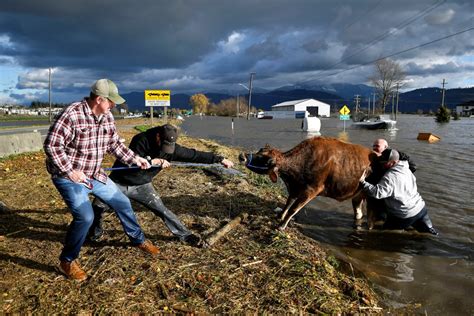Experts are sounding the alarm bells as catastrophic flooding wreaks havoc on cattle populations in Queensland, Australia. The consequences of this natural disaster extend beyond the loss of livestock to potentially impacting the prices of red meat, a staple in many households.
Unexpected Crisis Strikes
The recent deluge has already claimed over 100,000 head of cattle, sheep, and goats. As floodwaters continue to ravage the outback regions of Queensland, Northern Territory, and northwest New South Wales, farmers are left grappling with unprecedented challenges.
Amidst this crisis, John McKillop, independent chair of the Red Meat Advisory Council, sheds light on the grim reality awaiting consumers. He emphasizes how the widespread flooding is disrupting cattle production and transportation channels. With producers unable to bring their livestock to market for weeks or even months due to impassable roads and inundated pastures, a shortage in supply looms large on the horizon.
Ripple Effects on Prices
McKillop foresees a surge in red meat prices as processors compete fiercely for dwindling cattle resources. The restricted flow of cattle from these waterlogged regions is poised to drive up costs for consumers nationwide. However, he also anticipates a surge in demand for store cattle down the line once these animals are ready for market post-recovery.
In his optimistic outlook for the industry’s revival, McKillop assures that surviving cattle will eventually make their way back into circulation. He calls upon Australians to rally behind local farmers who are bearing the brunt of erratic weather patterns across different parts of the country.
Expert Insights and Vigilance
Colin Dwyer, an Adjunct Professor at James Cook University, draws parallels between current circumstances and those following Queensland’s devastating floods in 2019. He stresses the importance of regulatory bodies like ACCC (Australian Competition & Consumer Commission) monitoring price hikes rigorously to prevent unjustified inflation.
Richard Forbes, CEO of Independent Food Distributors, echoes concerns about transport disruptions affecting market dynamics either through pricing fluctuations or food scarcity issues. The closure of vital roads could exacerbate an already strained situation within Australia’s food supply chain.
As discussions around potential impacts gain momentum within agricultural circles and consumer markets alike,
the urgency mounts for proactive measures and public support towards safeguarding both farming communities
and consumer interests during this challenging period.




Leave feedback about this